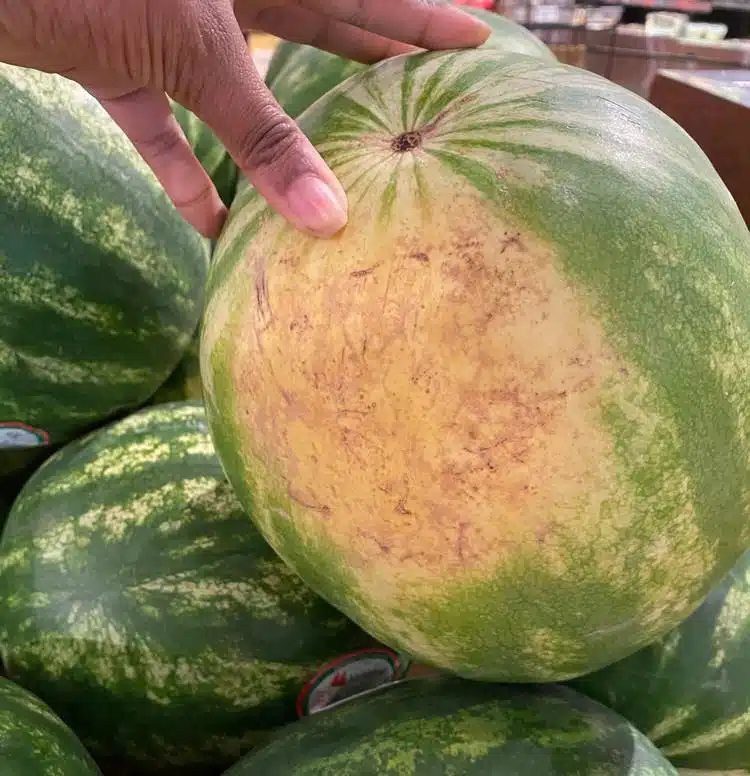Have you noticed small brownish cracks or irregular lines on the surface? Don’t worry: these marks, sometimes called veins , are often a sign of a high sugar concentration . And therefore of a very sweet and tasty fruit!
They actually demonstrate effective pollination , which promotes richness in taste.
-
The tail: a detail that says a lot

It’s all in the tail… of the watermelon, of course! Take a look at the stalk, that little remnant of stem often still attached to the fruit.
A brownish, dry, and curled stem is an excellent indicator of ripeness.
If it is still green, the fruit was probably harvested too early.
-
Weight, a key criterion (and easy to test)
Here’s a simple rule of thumb: if the watermelon is the same size, always choose the heaviest one . Why? Because that means it’s full of water . And water means freshness and juiciness!
Don’t hesitate to compare several fruits in the store: you will sometimes be surprised by the difference just by lifting them.
